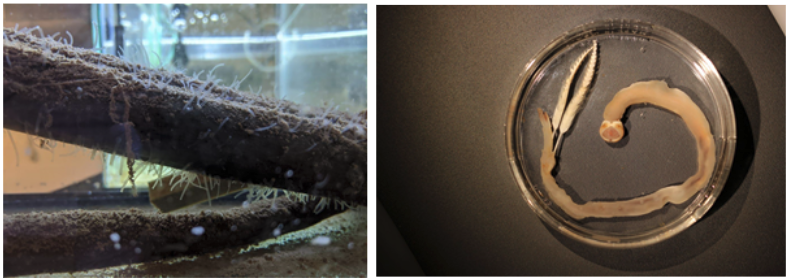Would it surprise you to learn that the ocean is a new frontier for medicinal research? Research led by former Ocean Genome Legacy (OGL) scientist, Dr. Roberta O’Connor, now an associate professor at Washington State University, investigates whether a new antibiotic made by shipworm bacteria to protect their host can also be used by humans to treat parasitic infections.
Apicomplexan parasites cause serious diseases in humans and domesticated livestock. Combating these parasites poses a significant challenge because they quickly develop drug resistance. Luckily, a key to this problem may be within this shipworm-bacteria relationship!

Shipworms have a mutually beneficial, or symbiotic, relationship with the bacteria that live within the cells of their gills; the bacteria help shipworms digest the wood that they eat and live in. Another role that these bacteria have is producing compounds that likely protect their host shipworms from pathogens. Mollusks, including shipworms, are susceptible to infection from gregarines, which are related to all apicomplexan parasites. O’Connor’s research posited that if the compounds produced by these bacteria are effective against these ancestral parasites, perhaps they would also be effective against their descendants as well.
O’Connor, who began this research while working at OGL before moving to Washington State University, showed that the compound tartrolon (trtE), produced by the symbiotic bacterium, is incredibly effective at targeting parasites and acts very quickly: it killed the parasites after only two hours of treatment. Most importantly, this compound was also effective against parasites representing all branches of the apicomplexan family tree, which means it may be an incredibly useful treatment for many types of parasites!
This study highlights how understanding symbiotic relationships can be vital to the advancement of medical research. As there are many different kinds of shipworms that can be found in many environments from driftwood to sea grass to even limestone, there is much to learn about these remarkable animals and their bacterial friends.
You can read the full scientific article here and learn more about this exciting research by Dr. O’Connor!
Interested in ensuring our collection is available to researchers for the advancement of medicine? Support OGL here!
